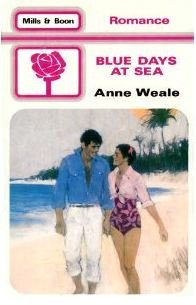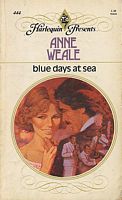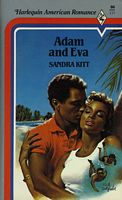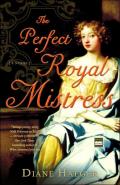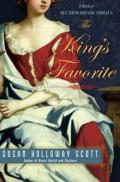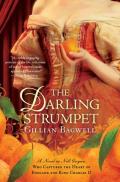On Tuesday Janet/Robin asked what makes certain books "classics" and alluded to the debate about a romance "canon." She concludes that
classic status is more an academic question than an emotional one. I like the idea of putting books in a certain order, identifying influences, looking at how the genre develops and evolves through certain books, and seeing a variety of tropes reinterpreted within different historical contexts, both inside and outside the books themselves.
It seems to me that when a lot of people think about when the modern romance genre began, they point to either Kathleen Woodiwiss's The Flame and the Flower (1972) or E. M. Hull's The Sheik (1919). When The Sheik is mentioned, it seems to ride in glorious erotic splendour far from the novels of Georgette Heyer (whose first romance was published in 1921) and there is then something of a gap in the chronology of classic/canonical authorial firsts until 1954, which saw the publication of Mary Stewart's Madam, Will You Talk? Barbara Cartland, meanwhile, floats in a timeless pink cloud over the twentieth century but it's rare for any specific book of hers to be mentioned.
This omits from the record a number of extremely successful romance authors writing at the turn of the 20th century: Ruby M. Ayres, Ethel M. Dell, Jeffery Farnol, Charles Garvice and Berta Ruck. Ayres's
first novel Richard Chatterton V.C. was published in 1916, after which she produced almost 150 titles. Although Ayres was known primarily for her romantic novels, she also wrote serials for the Daily Chronicle and Daily Mirror, as well as motion pictures in the United States and England. Her play Silver Wedding, was produced in 1932.
The Oxford Dictionary of National Biography called Ruby M. Ayres ""one of the most popular and prolific romantic novelists of the twentieth century"". (Bloomsbury)
Charles Garvice
was one of the most popular authors of his era—that era being roughly 1900-1920, when he was the Dan Brown of his day, producing novels of no great literary value that went down a storm with the reading public. Most of them were romances, Garvice churning out dozens upon dozens of books, which had sold some six million copies worldwide by 1911. (Holland)
As for Berta Ruck,
From 1905 she began to contribute short stories and serials to magazines such as Home Chat. One such serial was published as a full-length novel, His Official Fiancée (London, 1914), and its success marked the beginning of Ruck's career as a popular romantic novelist. She produced up to three books annually, as well as short stories and articles; her last novel, Shopping for a Husband (London, 1967), appeared when she was nearly ninety. (National)
All three were, clearly, very successful and prolific romance authors. I'd like to focus, however, on Dell and Farnol because Janet mentioned "influences" as an important aspect of being a classic, and Dell and Farnol certainly influenced other, now better-known, romance authors.
Farnol, whose first novel was published in 1907, is neither completely forgotten nor unloved by contemporary readers since there is a Jeffery Farnol Appreciation Society. He has been described in Twentieth Century Romance and Gothic Writers as
a link between the major writers of the 19th-century and the popular romances of the present. While no one could call him a serious writer like Scott or Dickens, one can easily note traces of both these writers in his works. (261)
He's an author who was well aware of the conventions of the genre(s) in which he was writing:
The Broad Highway (1910) begins with a prologue in which the author, tramping English lanes, meets a tinker with decided views on what should go into a romance. The ingredients he mentions - 'dooks or earls, or barro-nites', 'a little blood', and 'some love' are important features of the genre and are incorporated into the story. (Hughes 84)
He, like Ruck, did some interesting things with gender roles on occasion: his "women are slow only to realize that they are falling in love; other than that, they are independent, intelligent, and only too likely to try to take control from the heroes when those gentlemen are moving too slowly" (Romance 261). He was also an author read by Georgette Heyer in her youth (Kloester 15) and in her "The Black Moth [...] the characters and plot owe more to Baroness Orczy and Jeffery Farnol than to Jane Austen" (Kloester 61).
However, when Heyer revisited some of the characters from The Black Moth and reworked them in These Old Shades (1926), the major influence was Ethel M. Dell's Charles Rex
which Georgette had originally read in serial form in The Red Magazine in 1922. Like thousands of other young women she was a fan of Dell's hugely popular angst-ridden novels wih their breathless heroines and cruel heroes. In Charles Rex the heroine spends the first part of the book masquerading as a boy, in which disguise she is rescued by the hero [...]. She becomes his servant [...]. There are at least half-a-dozen points of close similarity between Dell's book and Georgette's before the plots diverge. (Kloester 83)
Heyer has maintained her popularity rather better than Dell, and I can't help wondering if this is partly because Dell's contemporary settings make the racism and class prejudice of her books rather more apparent than they are in Heyer's historical romances (though, as I've noted elsewhere, "Heyer’s personal views certainly affected her depiction of class and racial differences.")
Another possible reason for Dell's lack of appeal to current readers is that she takes a very spiritual view of love. This was, however, an aspect of her writing which had a great impact on Barbara Cartland, who insisted that she owed a debt to Dell and had learned from her that 'human passions are transformed by love into the spiritual and become part of the divine' (Cloud qtd in Vivanco, "Dame Barbara").
Spiritual the love may be, but that's precisely why she sometimes contrasted it with the violence of lust and as a result I can also see a couple of similarities between Dell's The Bars of Iron (1916) and Hull's The Sheik: both feature a hero who is not wholly British and his violence is ascribed, at least in part, to his foreign blood. A recent reader of The Bars of Iron was suprised to find it "so violent! And this violence is so relentlessly sexualised!" (Brown) and there's also a scene in which the violence is actually sexual: the hero, while married to the heroine, rapes her.
One final point about Dell is that she's also an important figure in the history of criticism of the popular romance. Rebecca West wrote of Charles Rex that "in every line that is written about him one hears the thudding, thundering hooves of a certain steed at full gallop; of the true Tosh-horse" (qtd in Beauman 174) and
Complaining about the lazily eulogistic reviewer who corruptly praises everything he reads, George Orwell described him
sinking his standards to a depth at which, say, Ethel M. Dell's Way of an Eagle is a fairly good book. (Beauman 178)
Q. D. Leavis, though, acknowledged that there was more to "the great names of popular fiction" (amongst which she included Dell) than "sympathetic characters, a stirring tale, and absence of the disquieting" (I'm inclined to quibble with that list since there are plenty of elements in Dell's work which I'm sure she intended to be "disquieting"):
Even the most critical reader who brings only an ironical appreciation to their work cannot avoid noticing a certain power, the secret of their success with the majority. Bad writing, false sentiment, sheer silliness, and a preposterous narrative are all carried along by the magnificent vitality of the author, as they are in Jane Eyre. Charlotte Brontë, one cannot help but feel after comparing her early work with modern bestsellers, was only unlike them in being fortunate in her circumstances, which gave her a cultured background, and in the age in which she lived, which did not get between her and her sponteneities. (62-63)
It was certainly a power I felt when I read Dell and, regardless of whether Leavis thought Dell's view of love was "false sentiment, sheer silliness," I admit to being moved by passages such as this:
"Death is such a baffling kind of thing."
"Yes, I know. You can't grasp it or fathom it. You can only project your love into it and be quite sure that it finds a hold on the other side. Why, my dear girl, that's what love is for. It's the connecting link that God Himself is bound to recognize because it is of His own forging. Don't you see--don't you know it is Divine? That is why our love can hold so strongly--even through Death. Just because it is part of His plan--a link in the everlasting Chain that draws the whole world up to Paradise at last. (The Keeper)
---
Beauman, Nicola. A Very Great Profession: The Woman's Novel 1914-39. 1983. London: Virago, 1989.
Bloomsbury. "Ruby M. Ayres."
Brown, Erica. "Violent sex and sexualised violence in ‘The Bars of Iron’ by Ethel M. Dell (1916)." Reading 1900-1950. 25 March 2013.
Dell, Ethel M. The Keeper of the Door. Project Gutenberg.
Holland, Steve. "Charles Garvice." Bear Alley. 20 Feb. 2010.
Hughes, Helen. The Historical Romance. London: Routledge, 1993.
Janet. "What Makes a Romance Novel Endure?" Dear Author. 17 June 2014.
Kloester, Jennifer. Georgette Heyer: Biography of a Bestseller. London: William Heinemann, 2011.
Leavis, Q. D. Fiction and the Reading Public. London: Chatto & Windus, 1932.
National Library of Wales. "Berta Ruck Archive."
Twentieth Century Romance and Gothic Writers. Ed. James Vinson. Detroit: Gale, 1982.
Vivanco, Laura. "Dame Barbara." Laura's Blog. 27 October 2013.
Vivanco, Laura. "Georgette Heyer: The Nonesuch of Regency Romance." Journal of Popular Romance Studies 3.2 (2014).

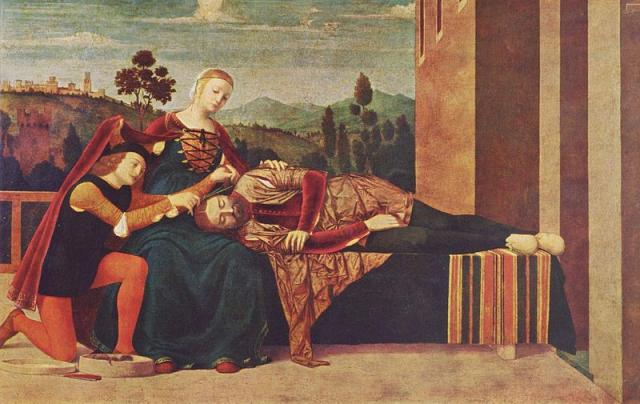
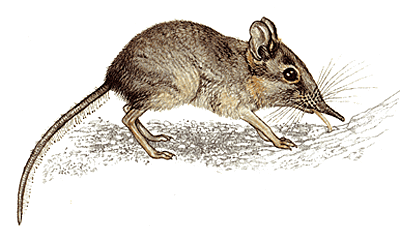
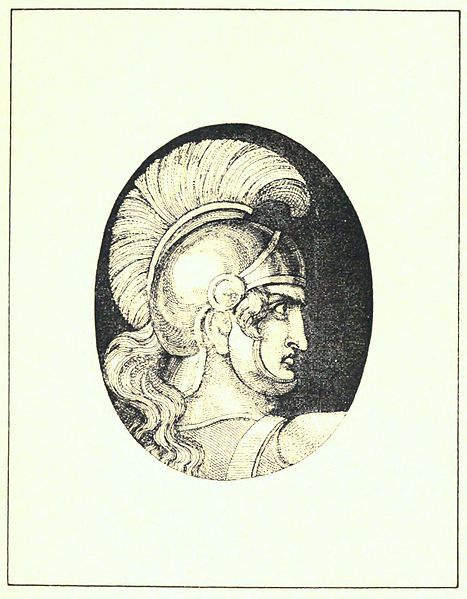 One of the sections in Kate Walker's 12 Point Guide to Writing Romance stresses the importance of
One of the sections in Kate Walker's 12 Point Guide to Writing Romance stresses the importance of.preview.png) Euan Hague sent me his latest article on Scotland, in which he notes that in romance novels set in Scotland (but written by US authors)
Euan Hague sent me his latest article on Scotland, in which he notes that in romance novels set in Scotland (but written by US authors) Ace Books
Ace Books  Starfleet
Starfleet  Tor Books
Tor Books  Baen
Baen Harlequin Presents
Harlequin Presents 
